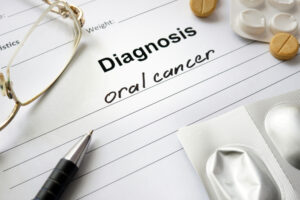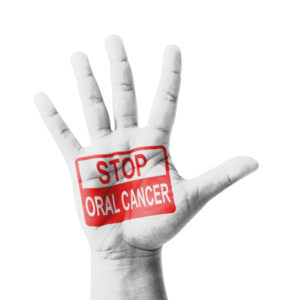Oral cancer treatment depends on the stage, location, and overall health of the patient. Early detection increases the range of treatment options and improves success rates. This article explores the main treatment methods for oral cancer, their benefits, and what patients can expect during and after treatment.
Overview of Oral Cancer Treatments
Oral cancer treatments are designed to remove cancerous cells, prevent their spread, and restore the patient’s oral health and function. The most common treatments include surgery, radiation therapy, chemotherapy, and advanced approaches like targeted therapy and immunotherapy.
The Importance of Early Detection
When oral cancer is diagnosed early, treatment is often less invasive and has a higher success rate. The American Cancer Society states that early-stage oral cancer has a five-year survival rate of 80-90%. However, as cancer progresses, the survival rate decreases, and treatment becomes more complex.
Surgical Treatments
Surgery is often the first line of defense for oral cancer. The goal is to remove the tumor and any surrounding tissue that may contain cancerous cells.
Types of Surgical Procedures
- Tumor Resection:
- Removes the tumor and a margin of healthy tissue to ensure all cancerous cells are eliminated.
- Commonly performed for smaller, localised cancers.
- Neck Dissection:
- In cases where cancer has spread to lymph nodes, this procedure removes affected lymph nodes in the neck.
- Reconstructive Surgery:
- Restores the appearance and function of the mouth and jaw after tumor removal.
- Involves tissue grafts, dental implants, or prosthetics.
Recovery and Aftercare
- Post-surgery, patients may experience swelling, pain, and difficulty swallowing.
- Rehabilitation therapies, such as speech and swallowing therapy, are often necessary to regain function.
Radiation Therapy
Radiation therapy uses high-energy rays to destroy cancer cells. It is often used alone for early-stage cancer or in combination with other treatments for advanced cases.
Types of Radiation Therapy
- External Beam Radiation:
- A machine directs radiation beams at the tumor site.
- This is the most common type of radiation therapy for oral cancer.
- Brachytherapy:
- Place radioactive material directly near the tumor.
- Effective for small, localised cancers.
Side Effects and Management
Radiation therapy can cause side effects, such as dry mouth, difficulty swallowing, and skin irritation around the treatment area. Managing these side effects involves:
- Staying hydrated to combat dry mouth.
- Using prescribed oral rinses to soothe irritation.
- Following a soft diet to ease swallowing.
Chemotherapy
Chemotherapy involves using powerful drugs to kill cancer cells. It is often combined with radiation therapy to increase effectiveness.
How It Works
- Chemotherapy drugs target rapidly dividing cancer cells and prevent them from growing.
- It is administered orally or intravenously, depending on the patient’s needs.
Common Side Effects
- Nausea and vomiting
- Hair loss
- Fatigue
- Increased risk of infection
Quick Tip: Anti-nausea medications and a balanced diet can help manage chemotherapy-related side effects.

Targeted Therapy
Targeted therapy focuses on specific molecules involved in cancer growth, minimising damage to healthy cells.
Benefits of Targeted Therapy
- More precise than traditional chemotherapy.
- Fewer side effects, as it spares healthy tissues.
Examples of Targeted Drugs
- Cetuximab: Blocks proteins that promote cancer cell growth.
- Used in cases of advanced oral cancer or when surgery and radiation are not options.
Immunotherapy
Immunotherapy boosts the body’s immune system to fight cancer more effectively. It is a newer approach for treating oral cancer, particularly in advanced stages.
How It Works
- Immunotherapy drugs stimulate the immune system to recognise and attack cancer cells.
- They can also block signals that cancer cells use to evade detection.
Suitable Candidates
- Patients with recurrent or metastatic oral cancer.
- Those who do not respond to other treatments.
Rehabilitation and Supportive Care
After treatment, many patients require rehabilitation to restore normal functions, such as eating, speaking, and swallowing.
Speech and Swallowing Therapy
- Therapists help patients adapt to physical changes and regain functional skills.
Psychological Support
- Emotional support is essential for coping with the stress of cancer diagnosis and treatment.
- Counseling and support groups provide a safe space to share experiences and challenges.
Preventing Recurrence
After successful treatment, regular follow-ups are essential to prevent recurrence. Steps to maintain long-term oral health include:
- Regular Screenings:
- Frequent check-ups with your dentist or oncologist to monitor for signs of recurrence.
- Healthy Lifestyle:
- Avoiding tobacco and alcohol to reduce risk.
- Eating a balanced diet rich in fruits, vegetables, and whole grains.
- Oral Hygiene:
- Maintain good oral hygiene practices to prevent infections and irritation.
Choosing the Right Treatment Plan
Selecting the best treatment plan depends on factors such as the stage of cancer, location, and overall health. Consulting with a team of specialists, including dental surgeons, oncologists, and radiologists, ensures a comprehensive approach tailored to individual needs.
Conclusion
Oral cancer treatment options have advanced significantly, offering patients a range of effective methods to combat the disease. From surgery and radiation therapy to innovative approaches like targeted therapy and immunotherapy, treatment plans are designed to address specific needs and improve outcomes.


